AppSolid is a cloud-based service designed to protect Android apps against reverse-engineering. According to the editor’s website, the app protector is both a vulnerability scanner as well as a protector and metrics tracker.
This blog shows how to retrieve the original bytecode of a protected application. Grab the latest version of JEB (2.2.5, released today) if you’d like to try this yourself.
Bytecode Component
Once protected, the Android app is wrapped around a custom DEX and set of SO native files. The manifest is transformed as follows:
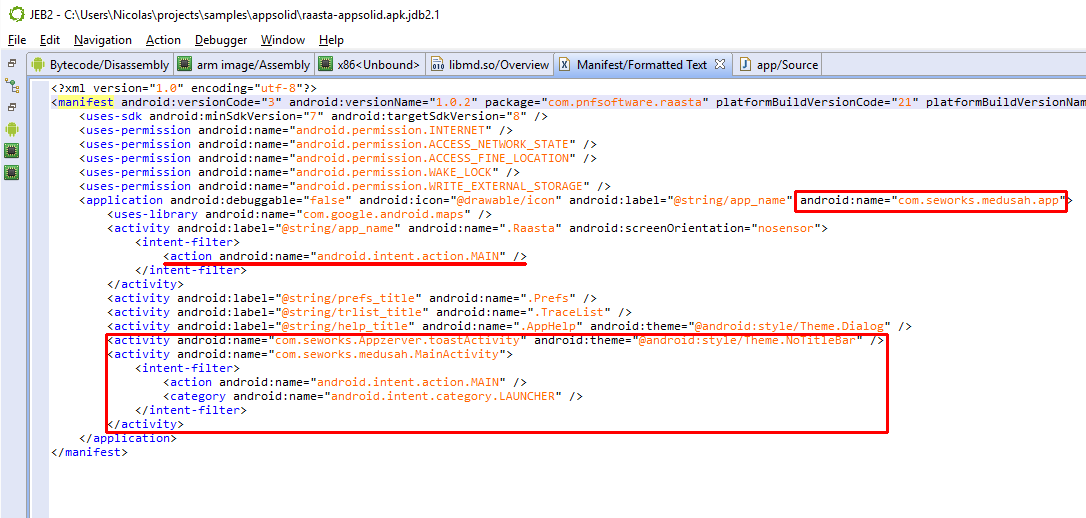
- The package name remains unchanged
- The application entry is augmented with a name attribute; the name attribute references an android.app.Application class that is called when the app is initialized (that is, before activities’ onCreate)
- The activity list also remain the same, with the exception of the MAIN category-filtered activity (the one triggered when a user opens the app from a launcher)
- A couple of app protector-specific activity are added, mainly the com.seworks.medusah.MainActivity, filtered as the MAIN one
Note that the app is not debuggable, but JEB handles that just fine on ARM architectures (both for the bytecode and the native code components). You will need a rooted phone though.
The app structure itself changes quite a bit. Most notably, the original DEX code is gone.
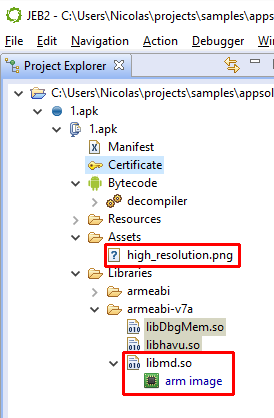
- An native library was inserted and is responsible for retrieving and extracting the original DEX file. It also performs various anti-debugging tricks designed to thwart debuggers (JEB is equipped to deal with those)
- A fake PNG image file contains an encrypted copy of the original DEX file; that file will be pulled out and swapped in the app process during the unwrapping process

Upon starting the protected app, a com.seworks.medusah.app object is instantiated. The first method executed is not onCreate(), but attachBaseContext(), which is overloaded by the wrapper. There, libmd is initialized and loadDexWithFixedkeyInThread() is called to process the encrypted resources. (Other methods and classes refer to more decryption routines, but they are unused remnants in our test app. 1)
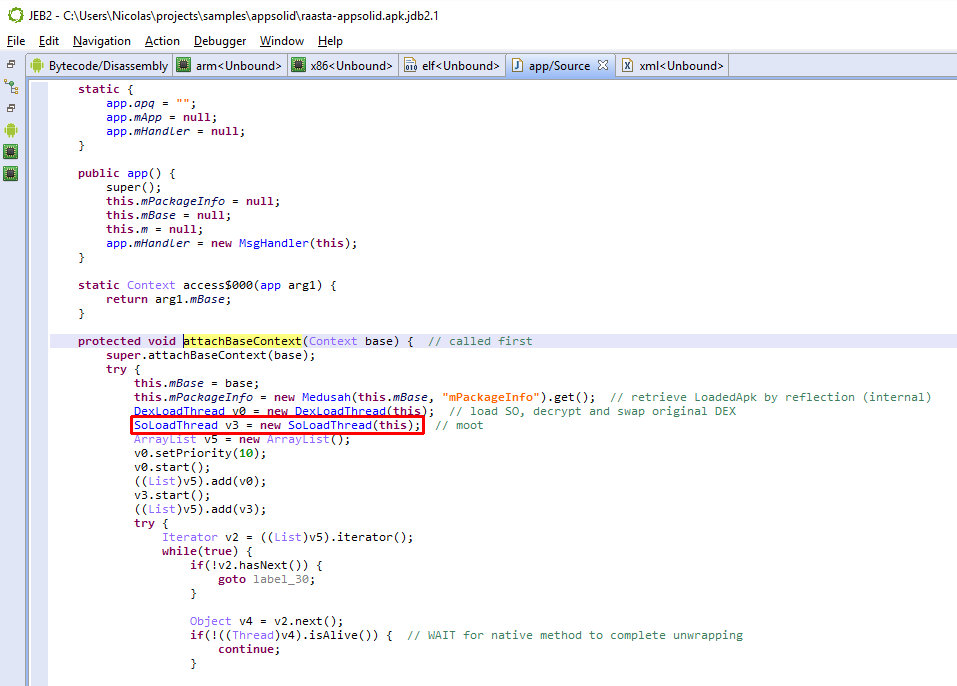
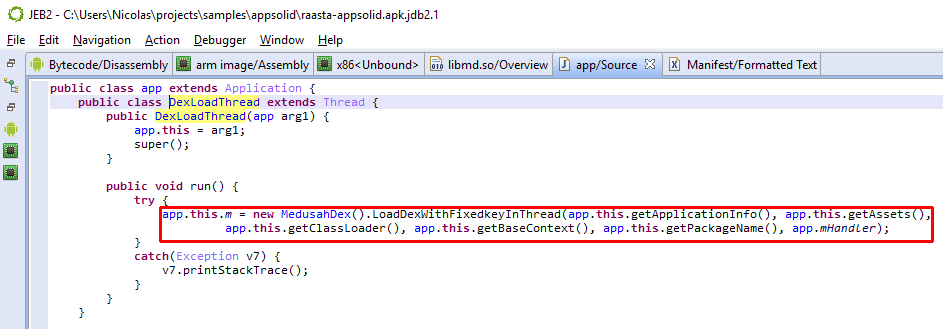
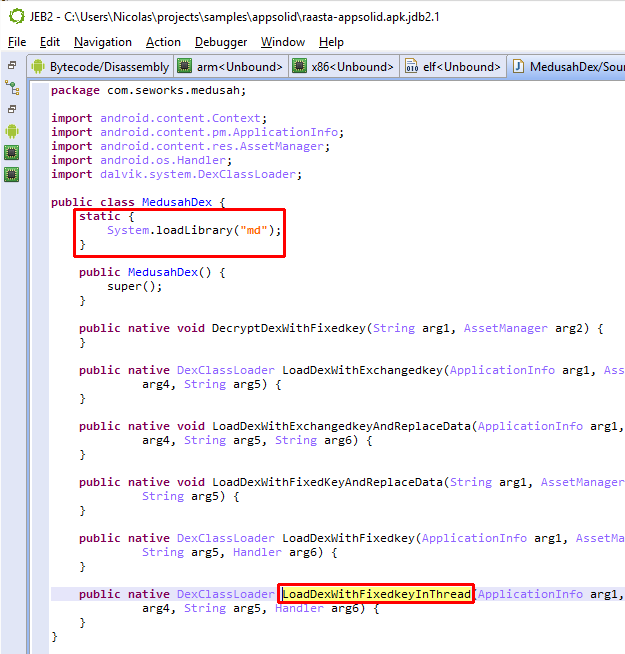
The rest of the “app” object are simple proxy overrides for the Application object. The overrides will call into the original application’s Application object, if there was one to begin with (which was not the case for our test app.)
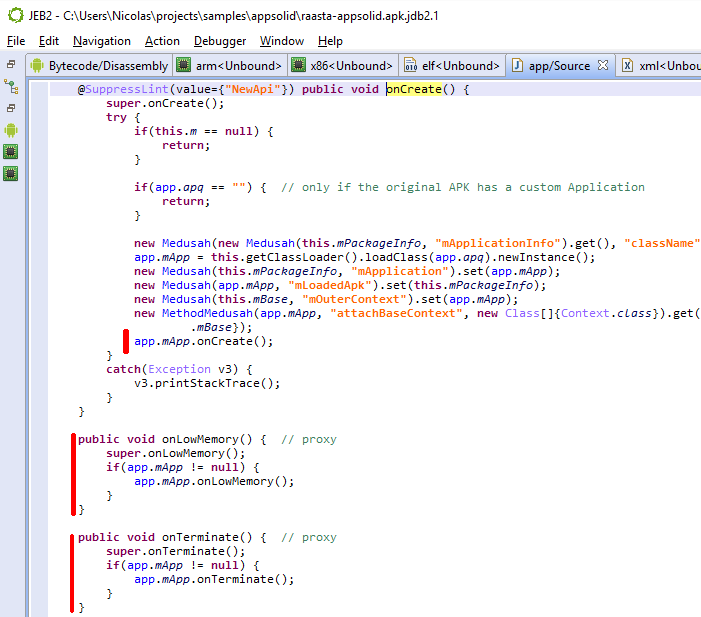
The remaining components of the DEX file are:
- Setters and getters via reflection to retrieve system data such as package information, as well as stitch back the original app after it’s been swapped in to memory by the native component.
- The main activity com.seworks.medusah.MainActivity, used to start the original app main activity and collect errors reported by the native component.
Native Component
The protected app shipped with 3 native libraries, compiled for ARM and ARM v7. (That means the app cannot run on systems not supporting these ABIs.) We will focus on the core decryption methods only.
As seen above, the decryption code is called via:
m = new MedusahDex().LoadDexWithFixedkeyInThread(
getApplicationInfo(), getAssets(),
getClassLoader(), getBaseContext(),
getPackageName(), mHandler);
Briefly, this routine does the following:
- Retrieve the “high_resolution.png” asset using the native Assets manager
- Decrypt and generate paths relative to the application
- Permission bits are modified in an attempt to prevent debuggers and other tools (such as run-as) to access the application folder in /data/data
- Decrypt and decompress the original application’s DEX file resource
- The encryption scheme is the well-known RC4 algorithm
- The compression method is the lesser-known, but lightning fast LZ4
- More about the decryption key below
- The original DEX file is then dumped to disk, before the next stage takes place (dex2oat’ing, irrelevant in the context of this post)
- The DEX file is eventually discarded from disk
Retrieving the decryption key statically appears to be quite difficult, as it is derived from the hash of various inputs, application-specific data bits, as well as a hard-coded string within libmd.so. It is unclear if this string is randomly inserted during the APK protection process, on the server side; verifying this would require multiple protected versions of the same app, which we do not have.
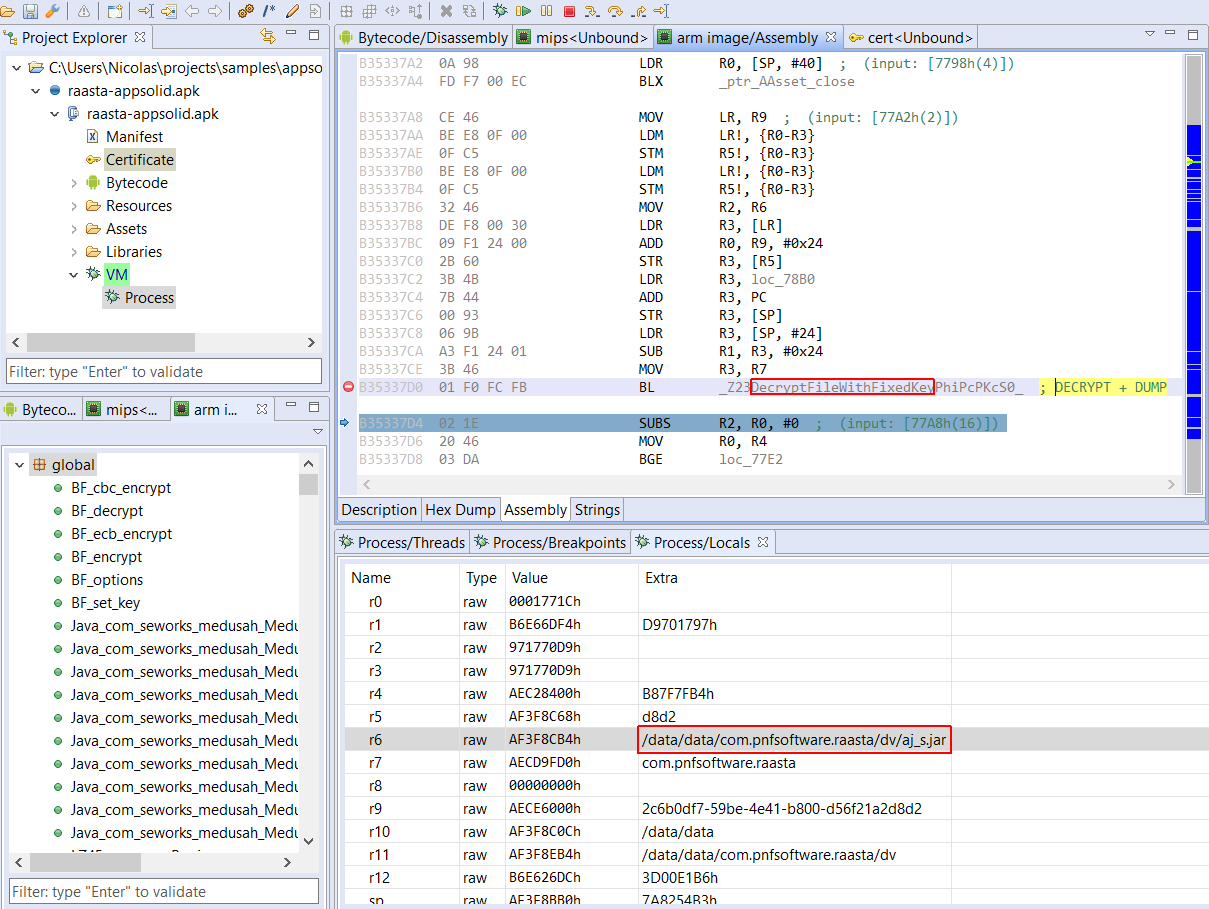
A dynamic approach is better suited. Using JEB, we can simply set a breakpoint right after the decryption routine, retrieve the original DEX file from disk, and terminate the app.
The native code is fairly standard. A couple of routines have been flattened (control-flow graph flattening) using llvm-obfuscator. Nothing notable, aside from their unconventional use of an asymmetric cipher to further obscure the creation of various small strings. See below for more details, or skip to the demo video directly.
Technical note: a simple example of white-box cryptography
The md library makes use of various encryption routines. A relatively interesting custom encryption routine uses RSA in an unconventional way. Given phi(n) [abbreviated phi] and the public exponent e, the method brute-forces the private exponent d, given that:
d x e = 1 (mod phi)
phi is picked small (20) making the discovery of d easy (3).
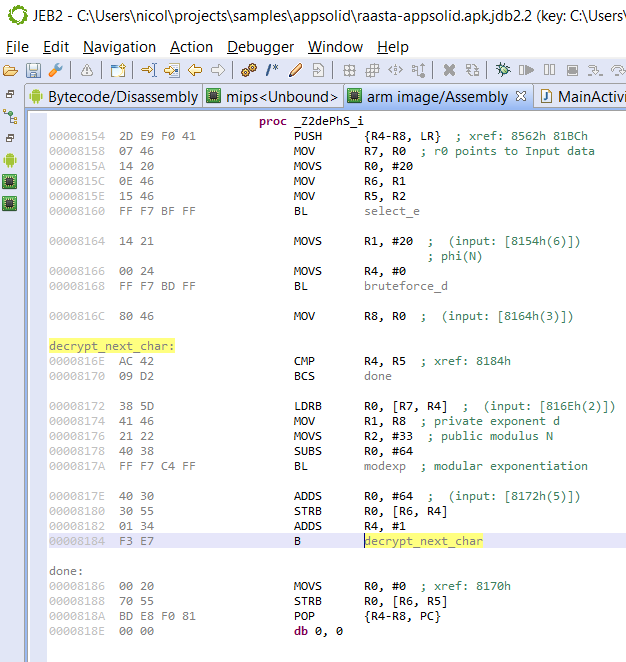
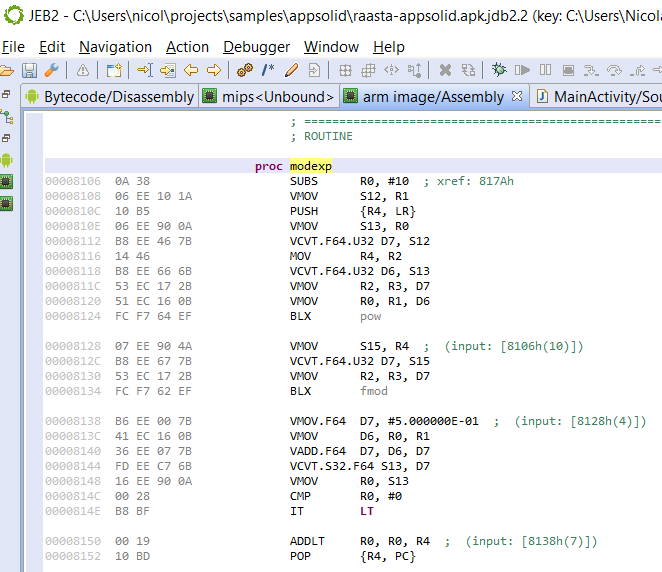
The above is a simple example of white-box cryptography, in which the decryption keys are obscured and the algorithm customized and used unconventionally. At the end of the day, none of it matters though: if the original application’s code is not protected, it – or part of it – will exist in plain text at some point during the process lifetime.
Demo
The following short video shows how to use the Dalvik and ARM debuggers to retrieve the original DEX file.
This task can be easily automated by using the JEB debuggers API. Have a look at this other blog post to get started on using the API.
Conclusion
The Jar file aj_s.jar contains the original DEX file with a couple of additions, neatly stored in a separate package, meant to monitor the app while it is running – those have not been thoroughly investigated.
Overall, while the techniques used (anti-debugging tricks, white box cryptography) can delay reverse engineering, the original bytecode could be recovered. Due to the limited scope of this post, focusing on a single simple application, we cannot definitively assert that the protector is broken. However, the nature of the protector itself points to its fundamental weakness: a wrapper, even a sophisticated one, remains a wrapper.
- The protector’s bytecode and native components could use a serious clean-up though, debugging symbols and unused code were left out at the time of this analysis. ↩
Hi,
great reading. Thanks a lot, please keep up the good work!
However, I would like to debate …..what about hooking the deletion of the unencrypted DEX file before discarding it? It would save you plenty of time. Right?
I am JEB1-user and compensate the lack of dynamic instrumentration by using the powerful framework of Frida. What can JEB2 do in comparison with the framework Frida?
Kind regards